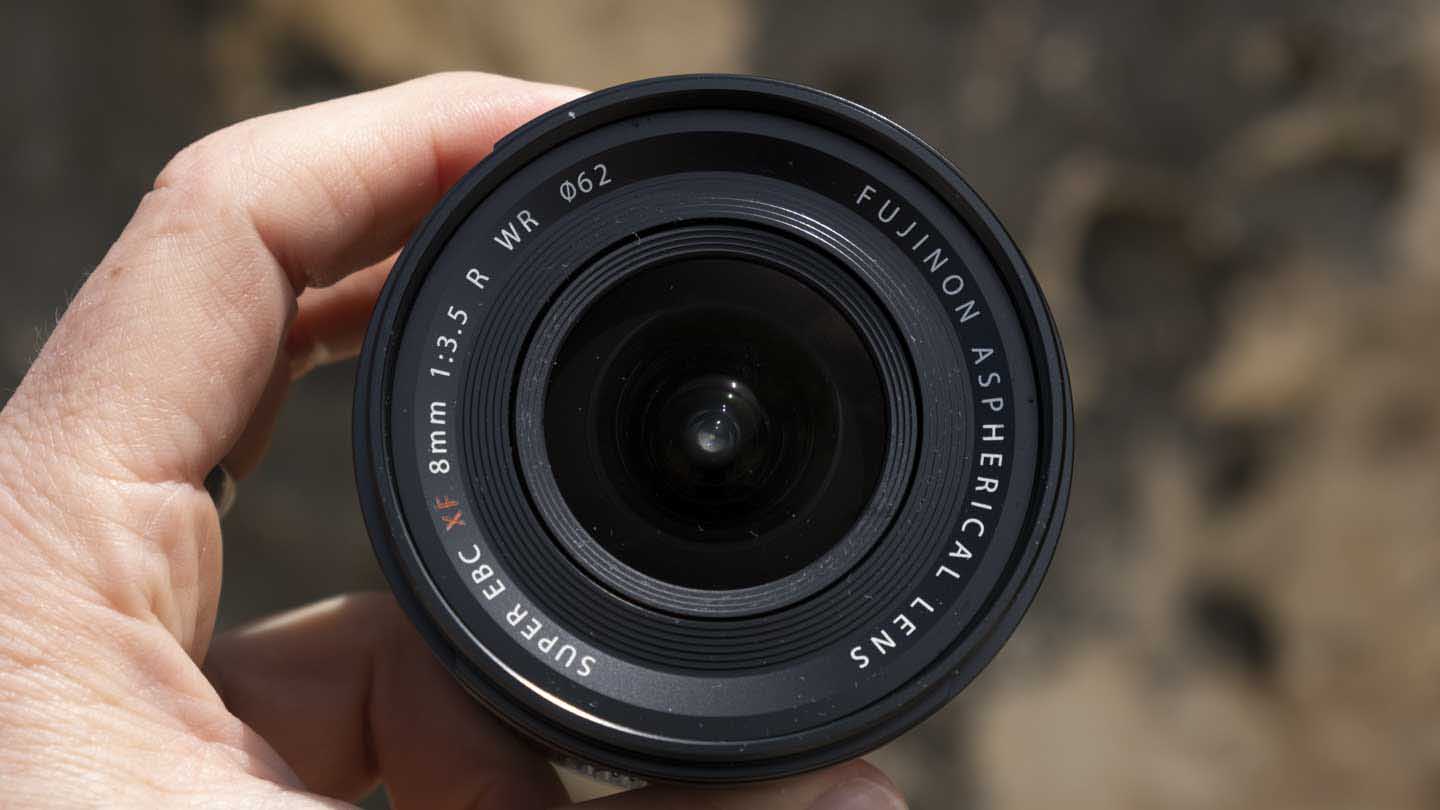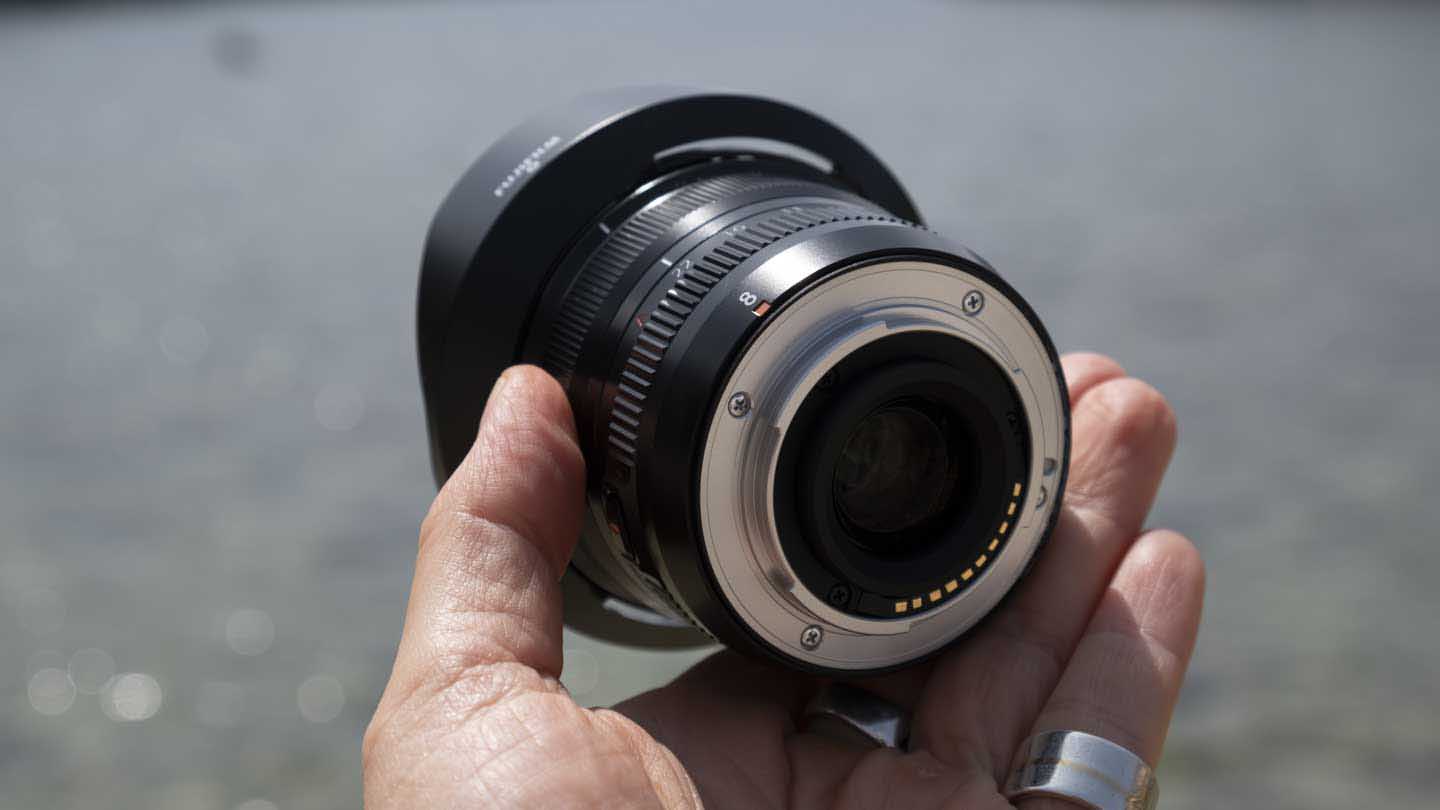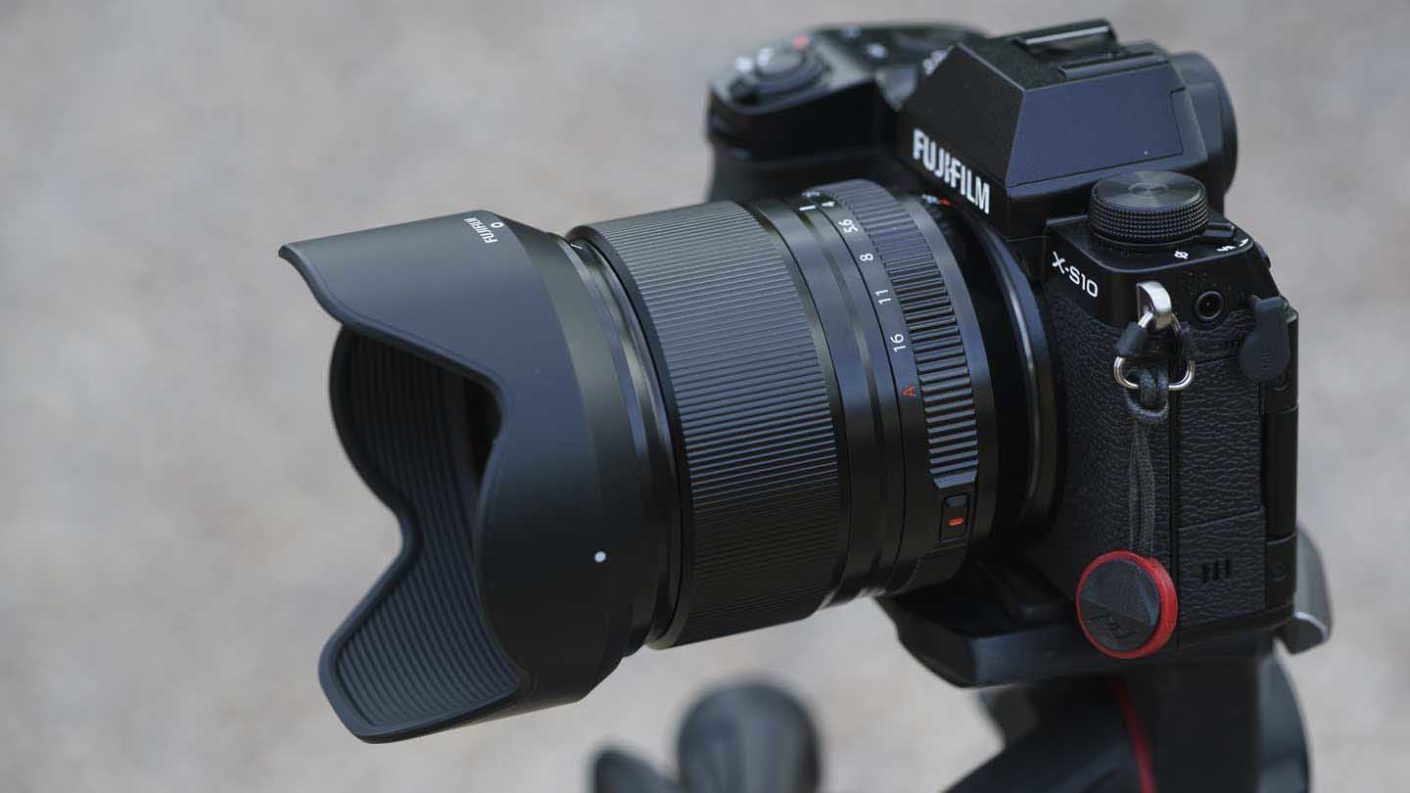The Fujifilm XF 8mm F3.5 R WR is a prime lens for use on the company’s X-series cameras such as the Fujifilm X-T5, X-Pro 3 and X-S20. As those cameras have APS-C format sensors, the l XF 8mm F3.5 R WR has an effective focal length of 12mm. That means it’s the widest Fujifilm prime lens that’s currently available with the XF mount.
Our Verdict
The Fujifilm XF 8mm F3.5 R WR is an attractive option for anyone tempted by the extreme wideness of the XF 8-16mm F2.8 R LM WR but who is put off by its price, bulk and weight. The prime lens looks more more at home on a camera like the Fujifilm X-T5 or X-S20 than the heftier XF 8-16mm F2.8 R LM WR. Optically, the XF 8mm F3.5 R WR also seems very good, keeping chromatic aberration, flare and curvilinear distortion (aided by the correction profiles) under excellent control. Sharpness also appears to be good across the frame but I want to verify this with a 40MP Fujifilm camera before passing final comment.
For
- Weather-sealed
- 'A' lock on the aperture ring
- Very light
Against
- No declick option for the aperture ring
What is the Fujifilm Fujinon XF 8mm F3.5 R WR?
Specification
- Product type: Ultra-wide prime lens
- Announced: 24th May 2023
- Mount: Fujifilm X
- Focal length: 8mm
- Effective focal length: 12mm
- Maximum aperture: f/3.5
- Minimum aperture: f/22
- Construction: 12 elements in 9 groups with 3 aspherical and 2 ED (extra low dispersion) elements
- Diaphragm blades: 9
- Minimum focus distance: 18cm
- Maximum magnification: 0.07x
- Filter size: 62mm
- Length: 52.8mm
- Weight: 215g

Features
The Fujifilm XF 8mm F3.5 R WR is constructed from 12 elements arranged in 9 groups. Amongst those elements are 3 aspherical and 2 ED elements to control distortion, spherical aberration and astigmatism so that the image quality is maintained into the corners of the frame.
As an ‘R’ lens, the XF 8mm F3.5 R WR has an aperture ring. This has settings running from f/3. The Fujifilm XF 8mm F3.5 R WR is constructed from 12 elements arranged in 9 groups. Amongst those elements are 3 aspherical and 2 ED elements to control distortion, spherical aberration and astigmatism so that the image quality is maintained into the corners of the frame.
As an ‘R’ lens, the XF 8mm F3.5 R WR has an aperture ring. This has settings running from f/3.5 to f/22 in 1/3-stop steps. The aperture is made by the 9-blade iris.
‘WR’ in the lens name indicates that it’s weather resistant. In fact, it’s sealed at 10 locations and can operate at temperatures as low as -10°C.
Further good news is that the front element is fluorine-coated to make it easier to clean and to repel water droplets or fingerprints.
The XF 8mm F3.5 R WR’s focusing mechanism is internal which means that the front element doesn’t rotate during focusing. That’s handy for anyone looking to use a polariser or graduated filter – which can be mounted via the 62mm thread.
The closest focusing distance is just 18cm from the sensor at which distance the magnification factor is just 0.07x. 5 to f/22 in 1/3-stop steps.

Build and handling
At just 52.8mm long and 68mm in diameter, the Fujifilm XF 8mm F3.5 R WR is compact for its focal length and it looks very neat on cameras like the Fujifilm X-S20. It also weighs just 215g, so it’s very portable and you’re unlikely to mind carrying it all day ready to capture any ultra-wide opportunities.
The Fujifilm XF 8mm F3.5 R WR aperture ring sits between the broader focusing ring and the camera. This has markings running from f/3.5 to f/4 and then in whole stops to f/22. As usual, the aperture can be adjusted in 1/3EV steps.
There’s also an ‘A’ marking on the aperture ring and when it’s rotated to this point, the ring locks in place and the aperture value is set via the camera. The small button with a red dash has to be pressed before the aperture ring can be rotated to a specific value.
The ring rotates with subtle clicks that are felt rather than heard. There’s no ‘de-click’ option so there’s likely to be slight movement visible when the ring is rotated during filming.
The broader manual focus ring rotates smoothly with a nice level of friction. Like most other modern lenses for mirrorless cameras, the focusing is by wire and there are no end points to the focusing movement. This means that there’s no focus distance scale on the lens but, when the camera is in manual focus mode and the ring is rotated, a distance scale is visible in the viewfinder or on the screen on the back of the camera.
There’s also the option to activate ‘Focus Check’ via the camera’s menu so that the area under the selected AF point magnifies during manual focusing.
As there’s no focus switch on the Fujifilm XF 8mm F3.5 R WR, the focus mode must be set via the camera.

Performance
I have shot with the Fujifilm XF 8mm F3.5 R WR on the new Fujifilm X-S20 announced at the same time. Together they focused quickly on a subject and the Face/Eye Detection performed very well. The camera managed to spot and focus on faces or eyes when they are very small in the frame.
The lens is very quite in operation, but it’s not totally silent. In most situations, the noise is unlikely to be picked up by an on-board microphone, but it might be noticeable in completely silent shooting situations. I’ll check this when I am able to use the lens in total silence.
I’ve been using the lens in bright sunny conditions and I’m impressed by how well flare is controlled wherever the sun is in relation to the front element.
Like most modern lenses, there are automatic correction profiles for the Fujifilm XF 8mm F3.5 R WR that are applied to raw and Jpeg images. These do a good job of removing the barrel distortion associated with a wide-angle lens. However, I’m impressed by how little distortion there is without the profile, I was expecting straight lines to bend more dramatically than they do.
Chromatic aberration is also controlled extremely well and, even with the correction profile turned off, I was unable to find any problematic fringing along high contrast edges.
The vignetting, however, is a different matter. Without the profile, there’s dramatic corner shading. Fortunately, the correction profiles do a good job of removing it so it’s not especially noticeable even when the aperture is at its widest setting. That said, if you shoot a series of images of a uniform subject, you may notice the corners getting a little brighter as the aperture closes down to f/5.6.
I want to use the XF 8mm F3.5 R WR on one of Fujifilm’s 40MP cameras such as the X-T5 or X-H2 before I pass final judgement on its sharpness, however my first impressions are that it maintains the detail surprisingly well into the corners of the frame. The sharpness is also good for most of the aperture range, but diffraction reduces the sharpness at f/22. It’s not extreme, but given the depth of field that is delivered by an 8mm lens, there’s little reason to use f/22.
Perspective distortion is an inevitable consequence of shooting with such a wide lens. This means that subjects close to the lens look much larger than those further away. Consequently, if you tip the camera up to photograph a building, the image has dramatic converging verticals. This can be used to creative effect, but it takes careful composition to avoid it.
Volumetric distortion can also be any issue. This makes objects towards the edges of the frame look wider than they really are. If you’re photographing a building, looking a long a wall, the distortion isn’t an issue, but it’s unflattering for people and worth avoiding if possible.
It’s also important to have a good look around the frame before pressing the shutter button. That’s because the angle of view is so wide (112°) that objects can easily sneak into the edges of the image.
Fujifilm XF 8mm F3.5 R WR sample images
Follow the link to browse and download full-resolution images shot with the Fujifilm XF 8mm F3.5 R WR on the Fujifilm X-S20. Please respect our copyright.
[FAG id=1403943]
Early verdict
The Fujifilm XF 8mm F3.5 R WR is a prime lens alternative to the XF 8-16mm F2.8 R LM WR, which is not too far off twice the price of new lens. The XF 8-16mm is also significantly bulkier (88×121.5mm vs 68×52.8mm) and weighs 805g, 590g more than the XF8mm prime. That makes the 8mm much more attractive for travel, or carrying for those odd occasions when you might need it. Naturally, the zoom lens is more versatile and lets in a little more light, but it comes at quite a high penalty.
Optically, the Fujifilm XF 8mm F3.5 R WR seems very good, but I’ve yet to test it on a 40MP camera like the Fujifilm X-T5.



